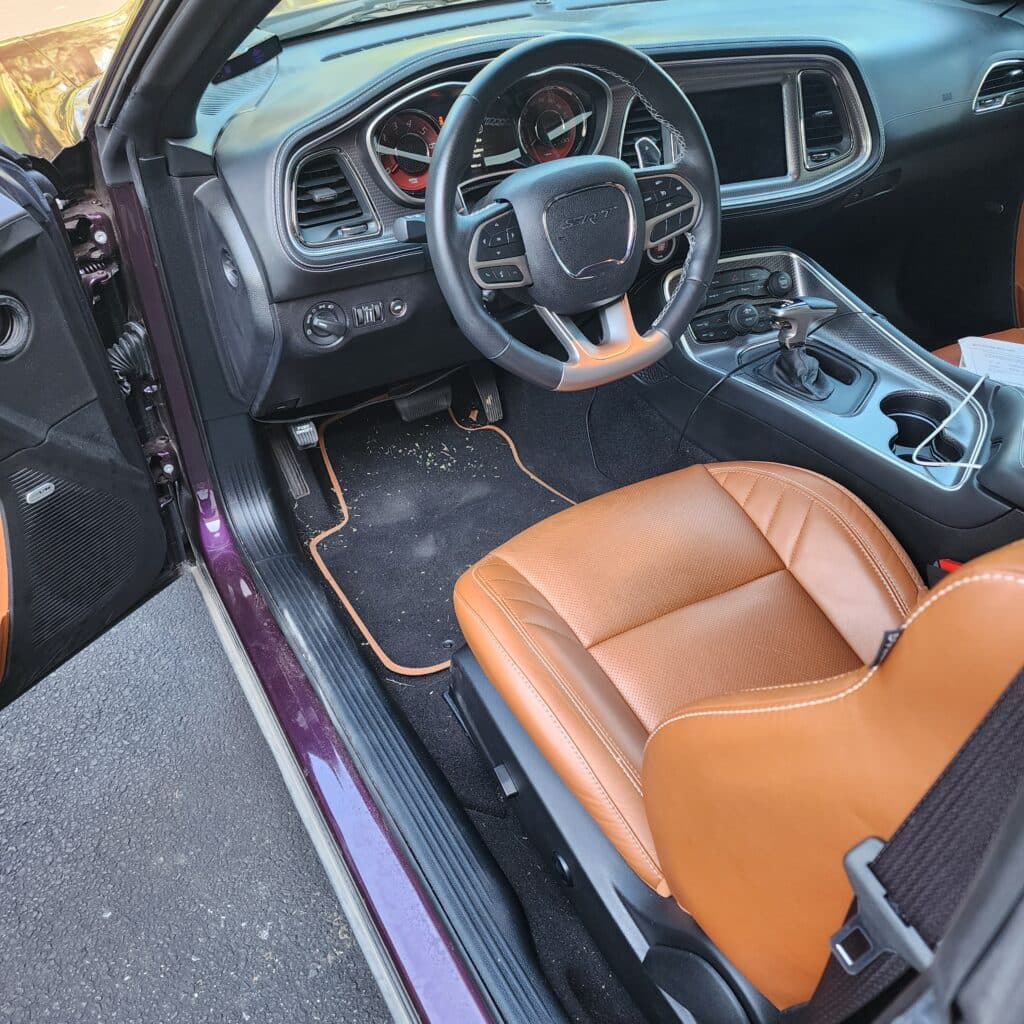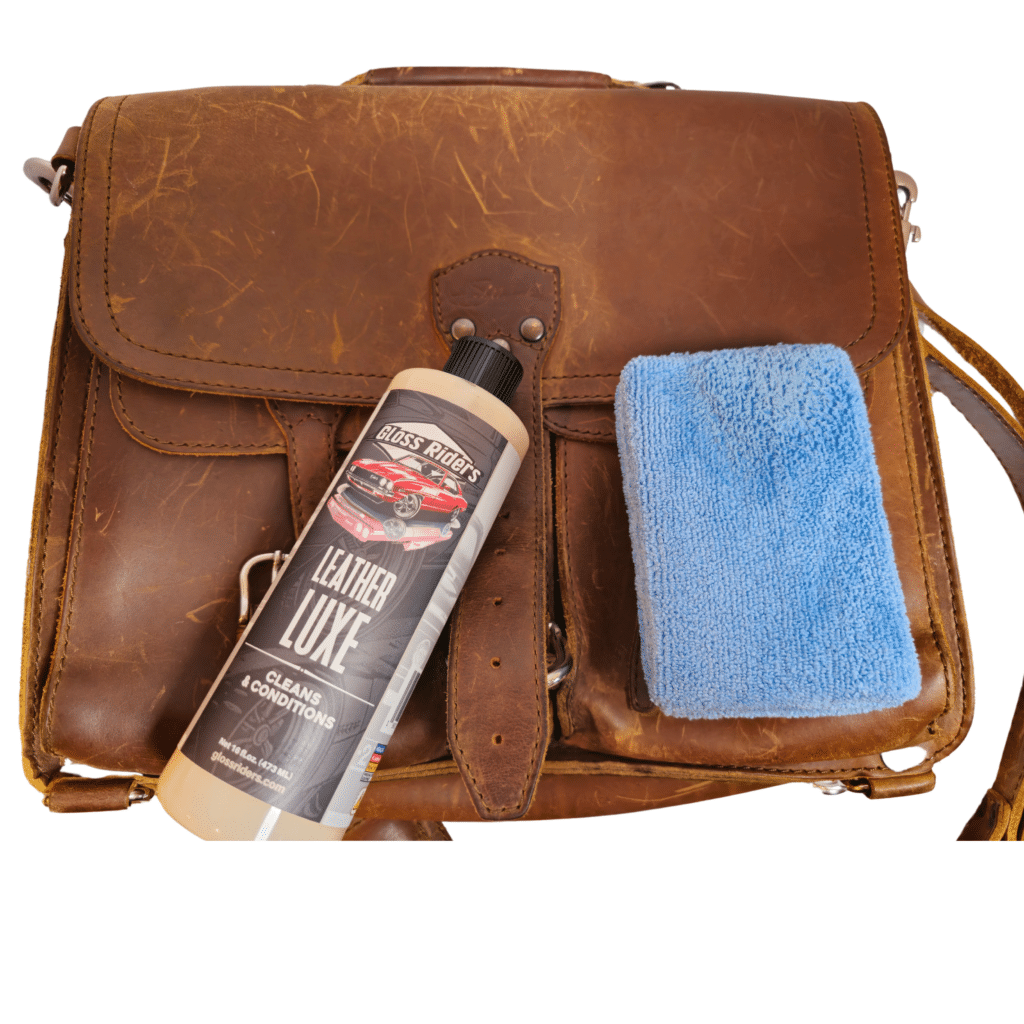
Protecting Leather: Understanding the Differences Between Car Leather and Bag Leather and the Best Ways to Care for Each
Leather is a luxurious material cherished for its durability, aesthetics, and timeless appeal. Whether it’s the interior of a car, a stylish handbag, or a premium jacket, leather demands care to maintain its quality. However, the approach to protecting leather varies depending on its type and intended use. This article explores the key differences between car leather and bag leather, the role of conditioners, and the best ways to care for each.
Understanding the Differences Between Car Leather and Bag Leather
Car Leather: Purpose and Protection
Car leather is specifically designed to endure a range of environmental factors, such as UV exposure, temperature fluctuations, moisture, and daily wear and tear. To meet these demands, most automotive leathers are treated with a protective coating—usually a pigmented polyurethane layer—that enhances durability and makes them easier to clean.
Types of Car Leather:
- Pigmented (Coated) Leather: The most common type in modern vehicles, known for its durability and ease of maintenance.
- Aniline Leather: Rare in cars due to its delicate nature; mostly found in high-end or classic vehicles where luxury outweighs practicality.
- Semi-Aniline Leather: Offers a balance between natural feel and some protective coating, used in some luxury vehicles.
- Nappa Leather: Soft and luxurious, often with a light protective finish, found in premium cars.

Nappa Leather from our Challenger Hellcat — pre-clean. You can see the Sepia seats are stained from jeans.
Bag Leather: Luxurious and Natural
Leather used in bags, wallets, and other fashion accessories often prioritizes appearance and texture over durability. These leathers are typically softer and less treated than automotive leather, emphasizing a natural, luxurious feel. This makes them more susceptible to stains, scratches, and moisture damage.
Types of Bag Leather:
- Full-Grain Leather: The highest quality, featuring a natural surface that showcases the leather’s grain and markings. It ages beautifully but requires careful maintenance.
- Top-Grain Leather: Slightly sanded to remove imperfections, providing a more uniform appearance while still maintaining a natural feel.
- Saffiano Leather: A type of treated leather with a cross-hatch finish, often coated for water and scratch resistance, commonly used in luxury bags.
- Suede and Nubuck: Soft, velvety finishes that are delicate and require special care to avoid stains and wear.

Leather bag. Conditioned on the top right with our Leather Luxe.
The Role of Leather Conditioners
Leather conditioners are products designed to maintain the leather’s flexibility, appearance, and lifespan by replenishing lost oils and moisture. However, the effectiveness of conditioners varies based on the leather type and its protective treatments.
How Conditioners Work
Conditioners are formulated to penetrate the leather’s surface, restoring essential oils that prevent drying and cracking. They also provide a thin layer of protection against environmental factors like UV rays and humidity.
- For Car Leather: Conditioners can help maintain the surface feel and prevent the coated finish from cracking or drying out, even if they don’t deeply penetrate the leather due to its protective coating.
- For Bag Leather: Conditioners are essential, as they nourish the leather directly, helping to maintain its softness, flexibility, and appearance.
Do Conditioners Work on All Leathers?
- Coated Leather: Conditioners are less effective at penetrating but can still maintain the top layer.
- Natural Leathers (Aniline, Full-Grain): Conditioners are highly beneficial, preserving the leather’s natural properties.
- Treated Leathers (Saffiano, Nubuck): Conditioners can be used, but care must be taken to use products specifically formulated for these delicate finishes.
Best Practices for Protecting Car Leather
Pigmented (Coated) Leather
- Protection: Regular cleaning with a mild leather cleaner to remove dirt and oils, followed by a light application of a conditioner designed for coated leathers.
- Avoid: Heavy waxes or oils that can sit on the surface and attract dust or cause discoloration.
- Additional Tips: Use UV protectants to prevent sun damage and keep the car interior shaded when possible.
Aniline and Semi-Aniline Leather
- Protection: Regular conditioning is crucial, using high-quality products designed for uncoated leathers. Conditioning every 3-6 months helps maintain the leather’s softness and appearance.
- Avoid: Harsh cleaners and excessive water that can damage the leather’s natural finish.
- Additional Tips: Use leather protectants or sealants designed for natural leathers to add a layer of defense against spills and stains.
Nappa Leather
- Protection: Use gentle conditioners that preserve the soft feel and appearance. Avoid heavy products that can make the leather sticky or overly shiny.
- Avoid: Direct sunlight and heat, which can cause fading and drying.
- Additional Tips: Clean regularly with a soft cloth and a dedicated leather cleaner to keep it in pristine condition.
Best Practices for Protecting Bag Leather
Full-Grain and Top-Grain Leather
- Protection: Condition regularly to keep the leather hydrated and supple. Use leather creams or balms that are free of harsh chemicals.
- Avoid: Over-conditioning, which can lead to a greasy feel. Avoid water exposure as much as possible.
- Additional Tips: Store bags in a cool, dry place away from direct sunlight and heat. Use dust bags when not in use to protect from dust and scratches.
Saffiano and Treated Leathers
- Protection: Use products specifically designed for treated leathers. Condition sparingly, as these leathers are already coated for durability.
- Avoid: Harsh chemicals that can strip the coating.
- Additional Tips: Clean with a damp cloth and mild soap, avoiding any abrasive cleaning methods.
Suede and Nubuck
- Protection: Use specialized suede protectors to guard against stains and moisture. Brush regularly with a suede brush to maintain the texture.
- Avoid: Water and oil-based conditioners that can stain or alter the suede’s appearance.
- Additional Tips: Spot-clean stains with a dedicated suede cleaner and avoid exposure to harsh weather conditions.
Surfaces Where Leather Conditioner Can Be Used
Vinyl and Synthetic Leathers (Leatherette, Faux Leather):
- Suitability: Leather conditioners can sometimes be used on vinyl and synthetic leather to add shine and maintain the surface’s appearance. However, since these materials are non-porous, the conditioner won’t penetrate as deeply.
- Considerations: Ensure the conditioner does not leave a greasy residue, as this can make the surface slippery or attract dust. Some leather conditioners are specifically formulated to work on both natural and synthetic leathers.
Rubber and Plastic:
- Suitability: Certain leather conditioners can be used on rubber and plastic surfaces, particularly in car interiors (like dashboards and door panels) to restore shine and prevent cracking.
- Considerations: Use sparingly, as too much product can create a sticky surface. Some products are marketed as multi-surface conditioners suitable for plastic, rubber, and leather.
Wood (Finished or Treated):
- Suitability: Leather conditioners, especially those with oils, can be used to add a sheen and protect finished or treated wood surfaces, such as furniture or dashboards with wood accents.
- Considerations: Avoid using on unfinished or raw wood, as the oils can stain or alter the wood’s appearance.
Footwear (Non-Leather):
- Suitability: Some leather conditioners can be used on certain types of non-leather footwear, like boots with mixed materials (e.g., leather and fabric combinations), to maintain the leather portions and offer mild water resistance to other parts.
- Considerations: Always test in a small area first to ensure compatibility.
Bags and Accessories with Mixed Materials:
- Suitability: Leather conditioners are great for bags and accessories that combine leather with other materials like canvas, nylon, or coated fabrics, as they can help keep leather sections soft and supple.
- Considerations: Be cautious when applying to non-leather portions, as staining or discoloration can occur.
Car Interior Trim (Beyond Leather Seats):
- Suitability: Conditioners can be used on soft-touch plastics and vinyl trims to enhance the look and feel of the surfaces.
- Considerations: Ensure the conditioner does not interfere with visibility or functionality, such as steering wheels, gear knobs, or pedal areas.
Surfaces to Avoid with Leather Conditioners
- Suede and Nubuck: These materials should not be conditioned with standard leather products as they can cause staining or alter the texture.
- Unfinished or Raw Wood: Oils can penetrate too deeply and stain or damage unfinished wood surfaces.
- Cloth or Fabric: Leather conditioners are not suitable for fabrics, as they can leave oily stains and residues.
Leather is a versatile and luxurious material that requires specific care depending on its type and usage. Understanding the differences between car leather and bag leather, and knowing how conditioners work for each, can help maintain their appearance and longevity. By following best practices and using the right products, you can keep your leather items looking their best, whether they’re enhancing the interior of your vehicle or adding a touch of elegance to your everyday accessories.

